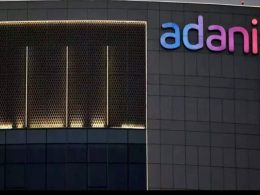Here’s a closer look at some of the top performers in Q2 and their impressive financial results
In Q2 of fiscal 2025, several large-cap Nifty 50 companies outperformed market expectations, driving positive sentiment despite economic challenges. Strong earnings from the banking and IT sectors helped boost investor confidence, underscoring the resilience of India’s corporate fundamentals. Companies in these sectors reported robust growth in revenue and profitability, fueled by cost management, increased demand, and strategic investments. Here’s a closer look at some of the top performers in Q2 and their impressive financial results.
HCL Technologies Limited
HCL Technologies, India’s third-largest IT services provider, delivered an impressive performance in Q2, beating market expectations. The company reported a slight quarter-on-quarter (QoQ) decline of 0.5% in net profit, which stood at Rs 4,235 crore. However, on a year-over-year (YoY) basis, HCL’s net profit rose by 11.2%, reaching Rs 4,237 crore, surpassing ET’s estimates of Rs 4,097 crore. Strong performance in the first half of fiscal 2025 prompted HCLTech to raise its annual revenue guidance to a range of 3.5-5% from the previous 3-5%.
HCLTech reported revenue of Rs 28,862 crore, marking a 2.9% QoQ increase and an 8.2% YoY growth from Rs 26,672 crore. These results reflect HCL’s success in leveraging digital transformation and cloud services demand, as well as effective cost optimization. The company’s consistent performance has bolstered confidence in India’s IT sector, reinforcing expectations for steady growth.
Reliance Industries Limited
Reliance Industries Limited (RIL), owned by Mukesh Ambani, delivered a stable performance in Q2 despite a 5% decline in consolidated net profit, which stood at Rs 16,563 crore. The company’s profit, however, surpassed the ET Now poll estimate of Rs 15,716 crore. RIL’s revenue dipped marginally by 1%, from Rs 2,31,886 crore to Rs 2,31,535 crore, reflecting the impact of lower refining margins in the petrochemical segment.
Despite the slight decline in profits, Reliance’s diversified business model continues to drive growth across segments, including digital services and retail. The company’s resilience in a volatile macroeconomic environment highlights its ability to manage external pressures effectively, solidifying its position as a key player in India’s economy.
HDFC Bank Limited
HDFC Bank, India’s largest private sector bank, reported strong financial results in Q2 FY25, exceeding market estimates. The bank’s net profit increased by 5% YoY to Rs 16,821 crore, beating the average analyst expectation of Rs 16,570 crore. HDFC Bank’s net interest income (NII) rose 10% YoY, reaching Rs 30,114 crore. The brokerage poll had pegged NII at Rs 30,306 crore, reflecting the bank’s ability to manage interest income effectively.
HDFC Bank reported a core net interest margin of 3.46% on total assets and 3.65% based on interest-earning assets. Other income (non-interest revenue) rose to Rs 11,480 crore in Q2, compared to Rs 10,710 crore a year ago. The bank’s gross non-performing assets (GNPA) stood at 1.36%, slightly up from 1.33% in the previous quarter, while net NPAs rose marginally from 0.39% to 0.41%. These figures underscore HDFC Bank’s solid financial health and effective risk management, highlighting its resilience in a dynamic banking environment.
Axis Bank
Axis Bank reported an 18% YoY increase in net profit, reaching Rs 6,918 crore in Q2, exceeding Bloomberg’s analyst estimate of Rs 6,370 crore. The bank’s impressive performance was driven by strong trading income and lower operating expenses, positioning it as one of the top performers in the banking sector this quarter. Axis Bank’s net interest income grew 9% YoY to Rs 13,483 crore, with net interest margins easing slightly to 3.99% compared to 4.11% a year ago.
The bank’s gross non-performing asset (GNPA) ratio improved to 1.44% in Q2, down from 1.73% in the year-ago period, indicating effective credit risk management. Net NPA also reduced slightly to 0.34%, compared to 0.36% a year earlier. Axis Bank’s robust results highlight its focus on profitability and risk management, reinforcing investor confidence in the bank’s long-term growth prospects.
Sector-Wide Analysis
The Q2 earnings season showcased a mixed performance across sectors. Analysis from JM Financial of 157 companies out of its 275-company coverage universe indicates that 44% of companies missed earnings expectations, while 41% exceeded forecasts. About 15% of companies reported results in line with expectations, illustrating the varied performance in different industries.
Revenue growth emerged as a primary concern, with 27% of companies (43 companies) posting weaker-than-expected growth. Sectors like FMCG, retail, auto, and mall operators experienced a slowdown in urban demand. Chemicals and consumer durables also saw a decline in demand, highlighting the challenges faced by companies relying on consumer spending.
Financial Sector Challenges
While the financial sector witnessed some strong performances, certain challenges surfaced, particularly in unsecured lending portfolios. Microfinance institutions (MFIs), select private sector banks, and non-banking financial companies (NBFCs) reported stress in unsecured lending due to high-interest rates and cautious lending practices. This trend reflects potential risks as financial institutions prepare for possible defaults and maintain conservative lending strategies.
Key Takeaways
1. Resilience in IT and Banking: IT companies like HCL Technologies and banks like HDFC Bank and Axis Bank outperformed expectations, signaling strength in sectors driven by technology and financial services.
2. Mixed Performance Across Sectors: While certain industries outshone, sectors dependent on consumer demand, such as FMCG and retail, faced headwinds, indicating a cautious economic environment.
3. Cost Management as a Growth Driver: Companies that effectively managed costs and optimized operations, like Axis Bank, delivered better-than-expected profitability despite broader economic challenges.
4. Macroeconomic Headwinds: Higher interest rates impacted demand in sectors like chemicals and consumer durables, highlighting the effects of macroeconomic pressures on corporate performance.
5. Investor Sentiment on India’s Growth: Despite challenges, strong earnings from leading companies have bolstered market sentiment, attracting both domestic and foreign investors looking to tap into India’s growth potential.
Outlook for the Coming Quarters
As companies navigate a challenging economic landscape, effective cost management, strategic investments, and a focus on core strengths remain essential for growth. The mixed performance in Q2 underscores the importance of adaptability in an environment shaped by fluctuating demand, high-interest rates, and shifting consumer behavior. Analysts expect resilient sectors like IT and banking to continue supporting India’s economic recovery, while sectors facing demand challenges may need time to regain momentum.
Large-cap companies that delivered strong Q2 results demonstrate the potential for sustained growth and investor confidence, even amid uncertainties. With a strategic approach to growth, these companies are well-positioned to capitalize on future opportunities, helping to drive India’s economic expansion.







